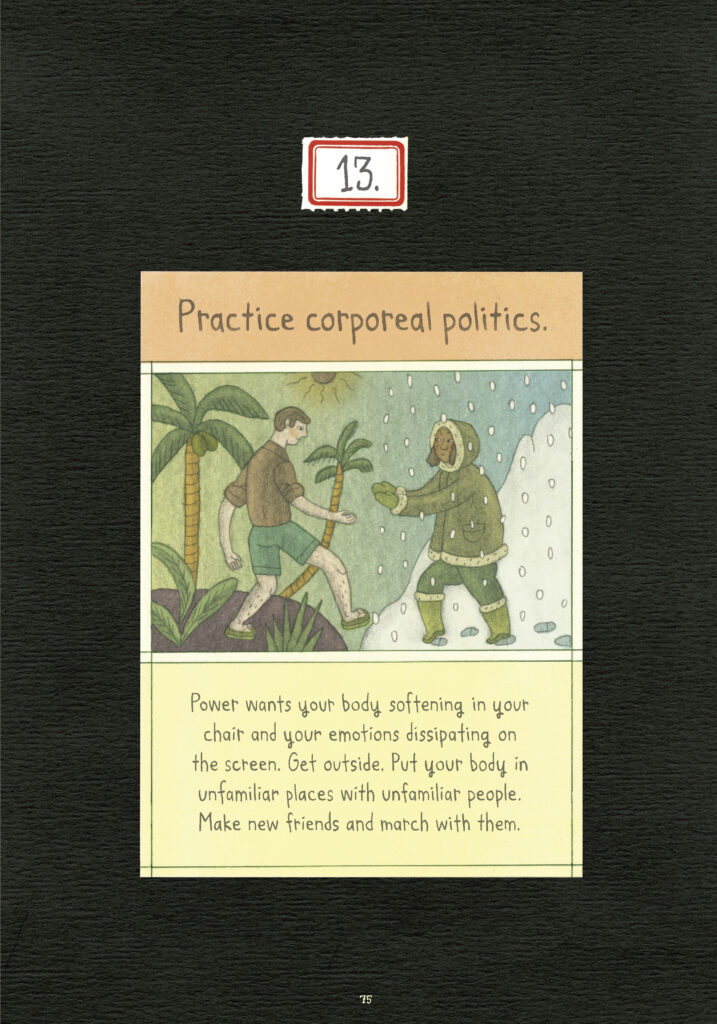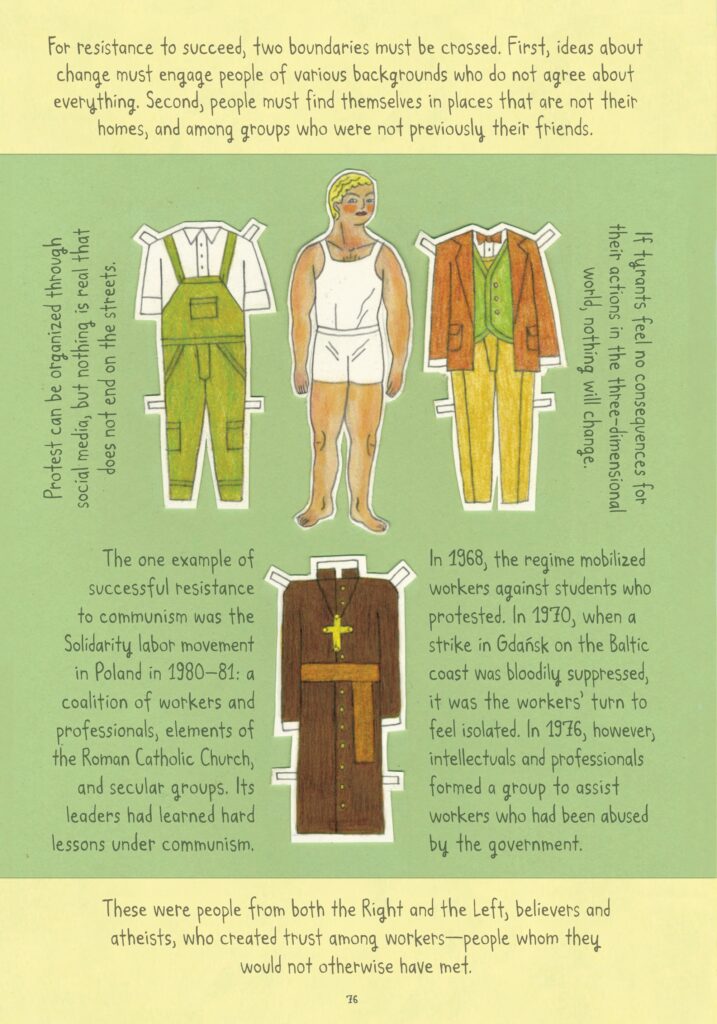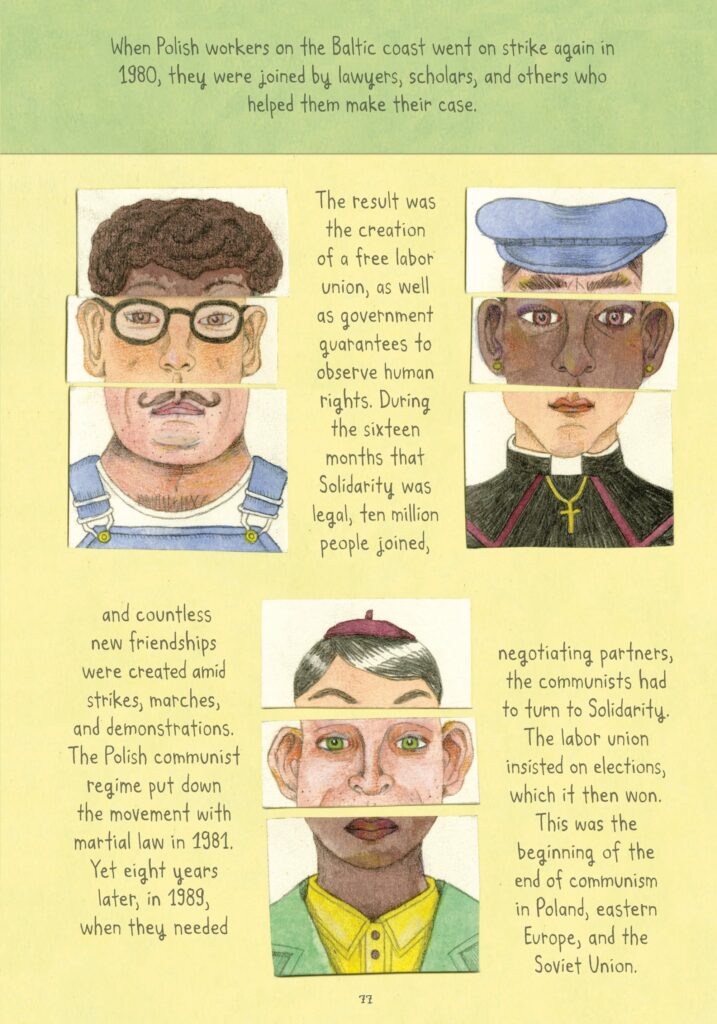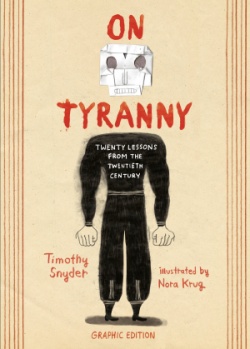Excerpt
To Resist Tyranny, Cross Social Boundaries
“Do not obey in advance,” begins On Tyranny: Twenty Lessons From the Twentieth Century by Yale history professor Timothy Snyder. Informed by his study of Nazi Germany and the U.S.S.R., Snyder writes about how to recognize and resist the ways totalitarian regimes take over. The book provided timely advice for Americans reeling under the Trump administration. Now, On Tyranny appears in a new graphic edition illustrated by Nora Krug, author of Belonging: A German Reckons with History and Home. Snyder’s lessons in abuse of power are as relevant as ever, while Krug’s drawings provide new cultural references, as in this example from Poland’s Solidarity labor movement. In it, Snyder and Krug reflect on the importance of in-person politics, taking to the streets, and organizing across social groups and boundaries.

Practice corporeal politics.
Power wants your body softening in your chair and your emotions dissipating on the screen. Get outside. Put your body in unfamiliar places with unfamiliar people. Make new friends and march with them.

For resistance to succeed, two boundaries must be crossed. First, ideas about change must engage people of various backgrounds who do not agree about everything. Second, people must find themselves in places that are not their homes, and among groups who were not previously their friends.
Protest can be organized through social media, but nothing is real that does not end on the streets.
If tyrants feel no consequences for their actions in the three-dimensional world, nothing will change.
The one example of successful resistance to communism was the Solidarity labor movement in Poland in 1980–81: a coalition of workers and professionals, elements of the Roman Catholic Church, and secular groups. Its leaders had learned hard lessons under communism. In 1968, the regime mobilized workers against students who protested. In 1970, when a strike in Gdańsk on the Baltic Coast was bloodily suppressed, it was the workers’ turn to feel isolated. In 1976, however, intellectuals and professionals formed a group to assist workers who had been abused by the government.
There were people from both the Right and the Left, believers and atheists, who created trust among workers—people whom they would not otherwise have met.

When Polish workers on the Baltic Coast went on strike again in 1980, they were joined by lawyers, scholars, and others who helped them make their case.

The result was the creation of a free labor union, as well as government guarantees to observe human rights. During the 16 months that Solidarity was legal, 10 million people joined, and countless new friendships were created amid strikes, marches, and demonstrations. The Polish communist regime put down the movement with martial law in 1981. Yet eight years later, in 1989, when they needed negotiating partners, the communists had to turn to Solidarity. The labor union insisted on elections, which it then won. This was the beginning of the end of communism in Poland, Eastern Europe, and the Soviet Union.
Reprinted with permission from On Tyranny Graphic Edition: Twenty Lessons from the Twentieth Century by Timothy Snyder copyright © 2017, 2021. Illustrations by Nora Krug © copyright 2021. Published by Ten Speed Press, an imprint of Penguin Random House.
|
Timothy Snyder
is the Levin Professor of History at Yale University and the author of The Road to Unfreedom, On Tyranny, Black Earth, and Bloodlands. His work has received the Hannah Arendt Prize, the Leipzig Book Prize for European Understanding, and an award in literature from the American Academy of Arts and Letters. He lives in New Haven, Connecticut.
|
|
Nora Krug
is a widely published German-American author and illustrator whose drawings and visual narratives have received numerous awards. Her visual memoir Belonging: A German Reckons with History and Home (foreign edition title Heimat) was the winner of the 2019 National Book Critics Circle Award. Krug is Associate Professor of Illustration at the Parsons School of Design in New York City.
|







